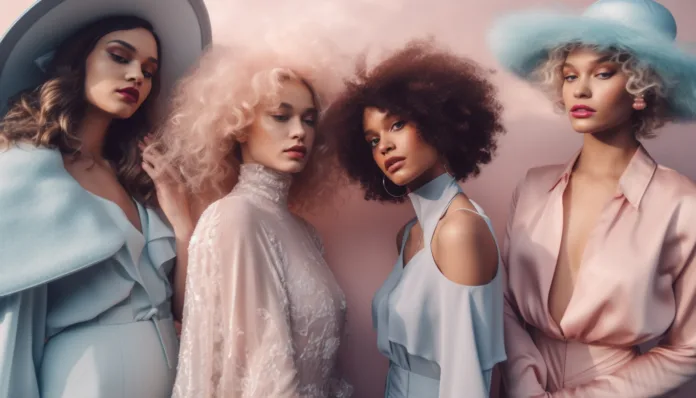Step into the realm of dupe culture, where the thrill of snagging those coveted Ganni loafers during the Boxing Day sales or scoring a mattress deal on Black Friday reigns supreme. There’s a dopamine rush like no other when you nab those sought-after items at a fraction of their usual price. But for beauty enthusiasts, the hunt for a bargain doesn’t hinge on sale seasons.
Welcome to a world where high-end brands’ products are mimicked by competitors, offering similar items at wallet-friendly rates. Dubbed as “dupes,” short for duplicates, these budget-friendly alternatives have skyrocketed in popularity, rivalling the speed of a Strictly contestant’s quickstep. The hashtag #beautydupe on TikTok has amassed a staggering 93 million views, and research from Mintel reveals that 74% of makeup users vouch for the efficacy of affordable products, deeming them as good as their premium counterparts. Meanwhile, platforms like Dupeshop, dedicated to pitting beauty dupes against pricier options, have witnessed a whopping 107% increase in traffic year-on-year.
Embed from Getty ImagesAs the dupe market continues to flourish, so do the debates around its legitimacy. Some view dupe culture as a means to ensure beauty remains accessible amidst the cost-of-living crisis. However, others criticise it, citing concerns from excessive consumerism to potential intellectual property infringement. With the busiest month on the horizon for dupe culture, the burning question arises: should you indulge?
Dupe culture isn’t entirely new. Fashion has long grappled with knock-offs replicating high-end designs within weeks of their debut on the runway. But back then, these cheaper versions didn’t necessarily win favour or street cred and were often associated with standing out in less favourable ways among the fashion-savvy.
Fast forward two decades, and dupes have undergone a remarkable rebranding akin to the Birkenstock’s rise. Social media played a pivotal role, accelerating trend cycles and driving a fervour for jumping onto trends swiftly and affordably. The proliferation of online retailers like Shein and Asos creating dupes while original products were in the limelight on IG and TikTok further fueled this phenomenon, extending its reach into the beauty realm.
Beauty dupes found their roots in YouTube, where beauty vloggers initially focused on makeup. The term “dupe” initially referred to products resembling limited edition or discontinued favourites. Soon, the industry secret about high street brands manufacturing makeup in the same factories as designer products surfaced, amplifying communities on YouTube, IG, and TikTok discussing makeup, skincare, and fragrance dupes. Today, platforms like @dupethat on IG boasting 1.2 million followers and Dupeshop with over 1 million users spotlight this thriving culture.
So, what defines a beauty dupe? Legally, there’s no clear definition; it’s more about creating a product that evokes the impression of the original while staying within legal boundaries. Brands navigating this territory tread a fine line, imitating enough to trigger the original’s recognition but maintaining enough differences to skirt around intellectual property rights. Private label retailers like Aldi, Lidl, and Primark have excelled in this arena, offering products akin to luxury brands at significantly lower prices. Their success includes likening Aldi’s Lacura line to La Prairie’s Skin Caviar Collection or its dupe fragrances for Acqua Di Parma Colonia and Jo Malone.
But not all dupes are copycats; some are affordable alternatives sharing similarities in benefits or shade ranges. Dupeshop, for instance, meticulously tests and reviews products against high-end equivalents, offering lower-cost dupes as matches based on formula, texture, shade, and performance. This approach has swayed consumers, with TikTok comparisons leading to nationwide sell-outs of budget-friendly alternatives to high-end favourites.
Despite the buzz and cost-effectiveness, doubts loom over whether dupes deliver the same results as scientifically-backed skincare. Experts raise concerns about variations in formulation and efficacy among products. Furthermore, dupes’ proliferation raises ethical concerns, contradicting sustainable values and contributing to increased beauty waste, a significant issue in an industry generating staggering amounts of non-recycled packaging annually.
Beyond ethical dilemmas, there’s a significant impact on initiatives like Benefit’s Bold Is Beautiful program, which supports women and girls globally. When consumers opt for dupes over original products, such initiatives might suffer a financial setback.
Yet, defenders of dupe culture argue its significance in an economy grappling with inflation, allowing individuals to maintain their routines affordably. Brands like Beauty Pie and The Ordinary have demonstrated that quality doesn’t always equate to high prices, challenging the notion that cost reflects quality. This educational aspect resonates strongly, empowering consumers to control their spending wisely.
So, is engaging in dupe culture a black-and-white issue? Not quite. It calls for smart decision-making. Saving a few pounds on a product might seem appealing, but it’s crucial to consider whether it aligns with sustainability values or supports the communities behind the product’s ingredients. Doing your research, exploring options, and pausing before making a purchase might sound like familiar advice, but in the realm of dupes, it’s advice worth duplicating.
